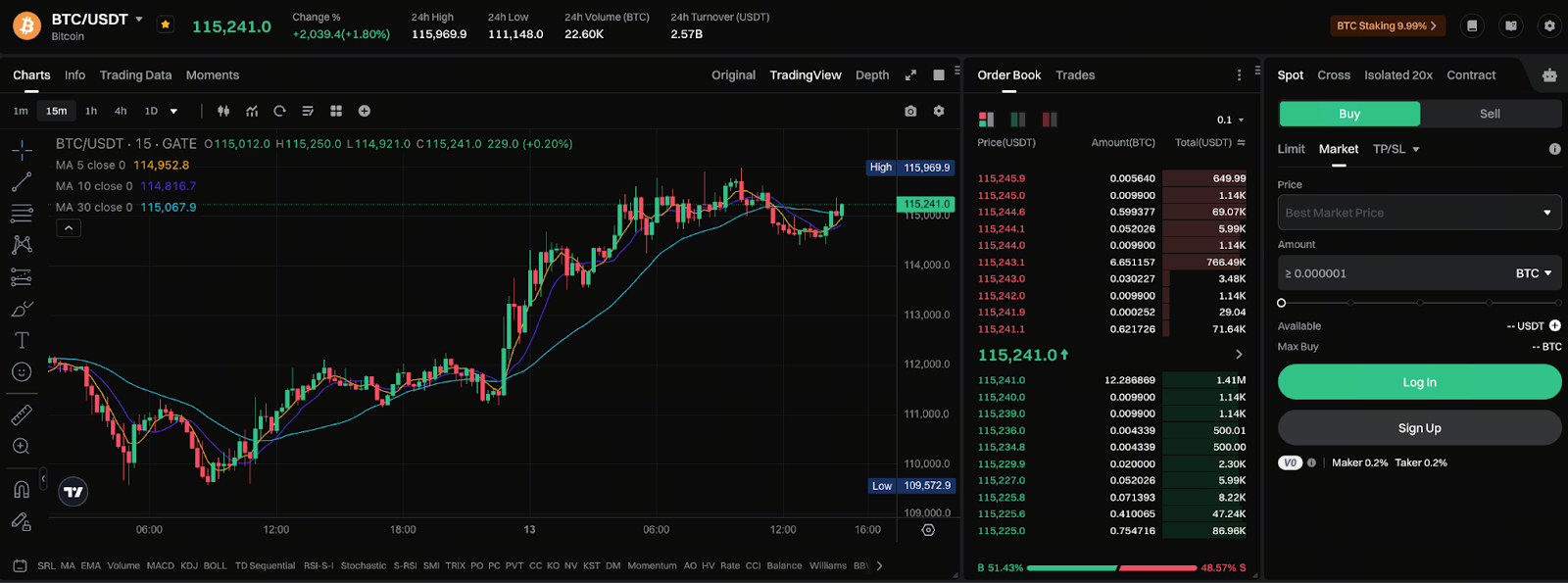Crypto Trading 101: What Is a Market Sell Order? Understanding Its Meaning and Risks
What Is a Market Sell?

Image: https://www.gate.com/trade/BTC_USDT
In both cryptocurrency and traditional financial markets, a “market sell” refers to selling assets at the best available price for immediate execution. When you place a market sell order, the system automatically matches your order with the highest current bid from buyers. For example, if you want to sell 1 Bitcoin immediately and the best bid is $105,000, the platform executes your sale at that price immediately.
Difference Between Market Sell and Limit Sell
Market orders prioritize speed, while limit orders focus on price.
- Market sell: Executed instantly, though the price may be lower than expected.
- Limit sell: You set your target price, and the order is executed only if the market reaches that level.
Market sell orders are common among short-term traders or those seeking to cut losses quickly in volatile conditions. Patient investors seeking better prices typically prefer limit orders.
Market Order Advantages: Speed Matters Most
The primary advantage of a market sell order is instant execution. When prices are moving fast, market orders let you complete trades immediately, helping you avoid greater losses if the market continues to decline. In highly volatile crypto markets like Bitcoin or Ethereum, having your trade filled instantly can be more important than achieving the perfect price.
Market Order Risks: Slippage and Price Uncertainty
Market orders carry slippage risk. Slippage is the difference between the price you see when placing the order and the actual execution price. If trading volume is low or volatility is high, the system may match your order against several buy orders in sequence, causing part of your assets to sell at lower prices, which can result in losses. For example, you intend to sell BTC at $105,000, but if market depth is insufficient, your average sale price might be only $104,800.
When to Use Market Sell in Crypto Markets
Market sell orders are best suited for the following scenarios:
- Stop-loss events: Sell immediately when prices fall below key support levels to minimize losses.
- Liquidity needs: When you need to liquidate assets immediately.
- Short-term or high-frequency trading: Time-sensitive strategies often use market orders.
If you use market orders on low-liquidity tokens, the risk increases because a shallow order book can lead to significant slippage.
Tips for New Investors:
- Check order book depth: Before placing a market sell, ensure there are enough buy orders to support your trade.
- Set reasonable stop-loss orders: In volatile markets, plan and set stop-loss orders ahead of time to avoid impulsive decisions.
- Avoid peak volatility: Slippage risk increases during major announcements or at market open.
Conclusion
Market sell is the most direct method for executing trades, but speed does not ensure stability. Understand the strengths and weaknesses, and use market orders wisely based on current conditions to remain competitive in the fast-moving world of crypto.
Related Articles

2025 BTC Price Prediction: BTC Trend Forecast Based on Technical and Macroeconomic Data

Pi Coin Transaction Guide: How to Transfer to Gate.com

Flare Crypto Explained: What Is Flare Network and Why It Matters in 2025

How to Use a Crypto Whale Tracker: Top Tool Recommendation for 2025 to Follow Whale Moves

What is N2: An AI-Driven Layer 2 Solution
